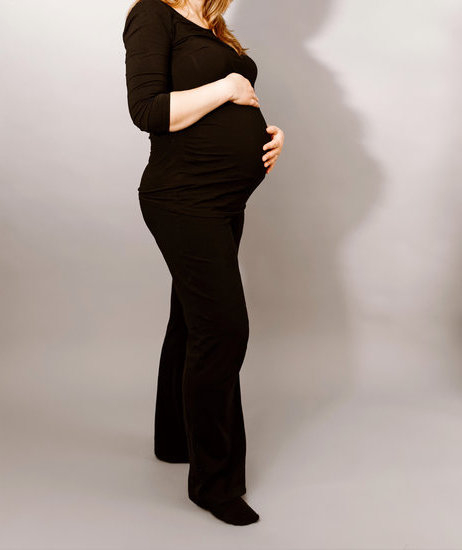Pregnancy is an incredible journey that spans over the course of nine months, but it’s often tracked in weeks rather than months. Understanding the transition from pregnancy weeks to months is important for expectant mothers as they navigate through the various stages of their pregnancy. From the changes in the mother’s body and baby’s development to common concerns and questions during each trimester, this article will provide a comprehensive overview of the pregnancy timeline.
The first trimester, which encompasses weeks 1-12, is a period of significant transformation for both the mother and the developing fetus. From morning sickness to the formation of vital organs in the baby’s body, this stage is crucial in setting the foundation for a healthy pregnancy.
As we move into the second trimester, spanning from weeks 13-28, pregnant women can look forward to feeling more energized and experiencing exciting pregnancy milestones such as feeling their baby kick for the first time.
Throughout this article, we will delve into what to expect during each month of pregnancy and how to navigate through common concerns that may arise at different stages. Additionally, we’ll explore what comes after birth as we transition from tracking pregnancy weeks to months. Join us as we embrace this remarkable journey from weeks to months of pregnancy.
The First Trimester
During the first trimester of pregnancy, a woman experiences many changes in her body as well as the development of the baby. Here is a breakdown of what to expect during each month:
1. Month 1: During the first month of pregnancy, the embryo forms and begins to develop its organs and systems. The mother may experience symptoms such as fatigue, morning sickness, and tender breasts.
2. Month 2: By the second month, the baby’s facial features start to form, and its heart begins to beat. The mother may still experience symptoms like nausea and fatigue, but these may begin to lessen as she enters the second trimester.
3. Month 3: In the third month, the baby’s organs continue to develop, and its sex can be determined through ultrasound. The mother’s abdomen may start to show a small bump, and her energy levels may increase as she leaves behind early pregnancy symptoms.
As each month progresses during the first trimester, it is important for the expectant mother to receive regular prenatal care from her healthcare provider. This will help ensure both her own health and that of her developing baby are closely monitored throughout this crucial stage in pregnancy weeks to months.
Changes in the Mother’s Body and Baby’s Development
As pregnancy progresses from weeks to months, the changes in the mother’s body and the baby’s development are significant. During the first trimester, from weeks 1-12, the mother may experience symptoms such as morning sickness, fatigue, and breast tenderness.
The baby’s development during this time is rapid, with major organs forming by the end of the first trimester. By week 12, the baby is about the size of a lime and has all its essential body parts.
Moving into the second trimester, from weeks 13-28, many women find relief from early pregnancy symptoms. The mother’s body continues to change as her belly grows, and she may start feeling her baby’s movements. At this stage, the baby undergoes significant growth and development. By week 20, they are about the size of a banana and can hear sounds from outside the womb.
As pregnancy transitions into the final stretch, from weeks 29-40, both the mother’s body and the baby continue to prepare for birth. The mother may experience increased discomfort as her uterus expands further. The baby’s movements may also become more pronounced as they run out of room in the womb. By week 40, a full-term baby is typically around 7 to 8 pounds and ready to be born.
| Pregnancy Stage | Description |
|---|---|
| First Trimester: Weeks 1-12 | Rapid development of major organs in the baby; symptoms like morning sickness and fatigue in mothers |
| Second Trimester: Weeks 13-28 | Growth of baby’s body; relief from early pregnancy symptoms for mothers |
| Final Stretch: Weeks 29-40 | Increased discomfort for mothers as uterus expands; increased movement of baby |
Navigating the Second Trimester
During the second trimester of pregnancy, which spans from weeks 13 to 28, many women find relief from the nausea and fatigue that plagued them during the first trimester. This period is often referred to as the “honeymoon phase” of pregnancy due to a decrease in symptoms and an increase in energy levels. The baby’s development continues at a rapid pace during this time, and expectant mothers may begin to feel their baby’s first movements, known as quickening.
Physically, the second trimester brings about noticeable changes in the mother’s body. The uterus expands significantly to accommodate the growing baby, leading to a visible baby bump for many women. Other common physical changes include fuller breasts, skin changes such as darkening of the areolas and linea nigra (a dark line that runs from the navel to the pubic bone), and possible weight gain. Women may also experience relief from early pregnancy symptoms like morning sickness and fatigue.
In terms of fetal development, by the end of the second trimester, most of the baby’s major organ systems are formed and functioning. During these weeks, expectant parents may opt for prenatal testing to check for genetic disorders or developmental abnormalities.
Additionally, ultrasound scans can provide parents with a closer look at their developing baby and allow healthcare providers to monitor fetal growth and development. As expectant mothers transition from pregnancy weeks to months during this stage, they will likely have their mid-pregnancy anatomy scan to assess the baby’s health and growth progress.
Pregnancy Milestones
During each month of pregnancy, expecting mothers can anticipate various milestones and changes in their bodies and the development of their baby. From the first month to the ninth, each stage brings with it unique developments and experiences that mark the progression of the pregnancy journey.
In the first month, many women may not even be aware that they are pregnant. However, during this crucial time, the fertilized egg implants itself into the uterus, where it begins to develop into an embryo. By the end of the first month, the embryo’s heart begins to beat and its brain, spinal cord, and other organs start to form.
As expectant mothers move into the second month of pregnancy, their body will undergo more noticeable changes. The fetus continues to grow rapidly and its facial features begin to take shape. Meanwhile, women may experience symptoms such as morning sickness, fatigue, and heightened emotions as hormonal changes take place in their bodies.
By the third month, or the end of the first trimester, most women will have heard their baby’s heartbeat through a prenatal checkup. At this point, major organs will have formed and are starting to function inside the fetus. The mother’s abdomen may also start showing signs of a baby bump as her uterus expands to accommodate her growing child.
| Pregnancy Month | Developments |
|---|---|
| First Month | Fertilized egg implants in uterus; embryo’s organs begin to form |
| Second Month | Fetus grows rapidly; facial features begin to take shape |
| Third Month | Major organs formed; fetal heartbeat heard at prenatal checkup |
The Final Stretch
Third Trimester Milestones
As expectant mothers enter the final stretch of pregnancy, from weeks 29 to 40, they can expect a series of milestones and changes in their bodies and daily routines. During this time, the baby will experience rapid growth and development, leading to an increase in weight and size. This is also the period when the mother may start feeling more physically uncomfortable, as her belly continues to expand and she may experience symptoms such as backaches, heartburn, and frequent urination.
Preparing for Labor and Delivery
In the last trimester of pregnancy, it is crucial for women to prepare for labor and delivery. They might start discussing birth plans with their healthcare providers, attending childbirth classes, and learning about breathing exercises and pain management techniques. Furthermore, they might also want to consider packing a hospital bag with essentials for themselves and the baby, installing a car seat, and finalizing arrangements for maternity leave from work.
Monitoring Fetal Movement
During weeks 29-40, mothers should pay close attention to their baby’s movements. Typically by this stage, the baby has established regular patterns of activity – however if there are any significant changes or lack of movement over an extended period of time it is important for mothers to seek medical advice promptly. This can be key indicator of possible problems such as fetal distress which needs quick intervention; leading ultimately in severe cases potential premature birth or stillbirth.
Common Concerns and Questions During Each Trimester
During each trimester of pregnancy, women may experience a range of concerns and questions as their bodies undergo significant changes to accommodate the growing fetus. It is important for expecting mothers to be aware of what is normal and when to seek medical advice for any concerning symptoms. Here are some common concerns and questions that often arise during each trimester of pregnancy.
First Trimester
During the first trimester, many women experience symptoms such as morning sickness, fatigue, and breast tenderness. It is common for expectant mothers to have concerns about the risk of miscarriage during these early weeks. Questions about prenatal vitamins, healthy eating habits, and exercise regimens may also come up.
Second Trimester
In the second trimester, some common concerns include round ligament pain, stretch marks, and increased vaginal discharge. Expectant mothers may also worry about fetal movement and growth milestones during this period. Questions about maternity leave planning, childbirth classes, and baby registry items are also typical at this stage.
Third Trimester
As pregnancy progresses into the third trimester, concerns about preterm labor, pelvic pressure, and Braxton Hicks contractions often arise. Expecting mothers may have questions about labor and delivery options, postpartum recovery, and breastfeeding preparation during this time. Additionally, many women have concerns about recognizing the signs of labor and when to go to the hospital or birthing center.
By addressing these common concerns and answering any questions that arise throughout each trimester of pregnancy, expectant mothers can feel more informed and empowered as they navigate the journey from pregnancy weeks to months.
Transitioning From Pregnancy Weeks to Months
After the long-awaited arrival of your little one, it’s time to transition from counting pregnancy weeks to months and focus on the exciting journey of motherhood. As you prepare to welcome your baby into the world, there are important things to know about what happens after birth. Here’s what you can expect during the postpartum period:
1. Physical Recovery: After giving birth, your body will need time to heal and recover. You may experience postpartum bleeding, also known as lochia, which can last for several weeks. Your healthcare provider will give you guidelines on how to care for yourself during this time, including proper wound care if you had a c-section.
2. Breastfeeding Challenges: Many new mothers face challenges when it comes to breastfeeding. From latching issues to concerns about milk supply, it’s important to seek support from lactation consultants or other experienced mothers. It’s okay to ask for help and seek guidance on how to make breastfeeding a positive experience for both you and your baby.
3. Emotional Well-being: The postpartum period can bring about a rollercoaster of emotions, commonly known as the “baby blues.” It’s normal to feel overwhelmed, anxious, or weepy in the days and weeks following childbirth. However, if these feelings persist or intensify, you may be experiencing postpartum depression and should seek professional help.
As you make the transition from pregnancy weeks to months towards embracing motherhood, remember that every woman’s postpartum experience is unique. Be patient with yourself and take each day as it comes, allowing yourself time to adjust to this new chapter in your life.
Conclusion
As expectant parents, transitioning from counting pregnancy weeks to months marks a significant milestone in the journey towards welcoming a new life. It’s a time of anticipation and excitement, as well as a period of constant change and growth for both the mother and the baby. Understanding the various stages and milestones during each trimester is crucial in preparing for the arrival of a little one.
Throughout the first trimester, from weeks 1 to 12, expectant mothers experience numerous physical and emotional changes, while their babies undergo rapid development. The second trimester, spanning from weeks 13 to 28, is often described as the “honeymoon phase” of pregnancy due to reduced discomfort and increased energy levels. Finally, during weeks 29 to 40 – the final stretch – preparations for childbirth become more tangible as expectant parents eagerly await their baby’s arrival.
As parents-to-be navigate through these different stages, it’s common to experience concerns and have questions about their pregnancy journey. From morning sickness and fatigue in the early months to fetal movement patterns and labor anticipation towards the end, each stage brings its unique set of challenges and remarkable experiences. Seeking guidance from healthcare providers can provide reassurance and valuable insights during this transformative time.
Ultimately, transitioning from pregnancy weeks to months signifies an incredible transition towards parenthood. Embracing this journey with patience, mindfulness, and support from loved ones can help alleviate any worries or uncertainties that may arise along the way. As each month passes by, it brings expectant parents closer to meeting their new addition while deepening their bond with one another in this extraordinary process of creating life.
Frequently Asked Questions
How Do You Calculate Weeks Into Months Pregnant?
Calculating weeks into months during pregnancy can be a bit tricky due to the varying number of days in each month. Typically, the first trimester is 1-3 months, the second trimester is 4-6 months, and the third trimester is 7-9 months.
How Pregnancy Weeks Are Counted in Months?
Pregnancy weeks are usually counted by dividing the total weeks of pregnancy by four to get the approximate number of months. For example, if a woman is 16 weeks pregnant, she would be approximately 4 months along. This method provides a rough estimate but may not be entirely accurate.
What Weeks Are 5 Months Pregnant?
At 20 weeks pregnant, a woman is considered to be five months along. This means she has completed almost half of her pregnancy. It’s an exciting time because the baby is continuing to develop and become more active, making their presence felt through movements and kicks.

Welcome to my fertility blog. This is a space where I will be sharing my experiences as I navigate through the world of fertility treatments, as well as provide information and resources about fertility and pregnancy.





